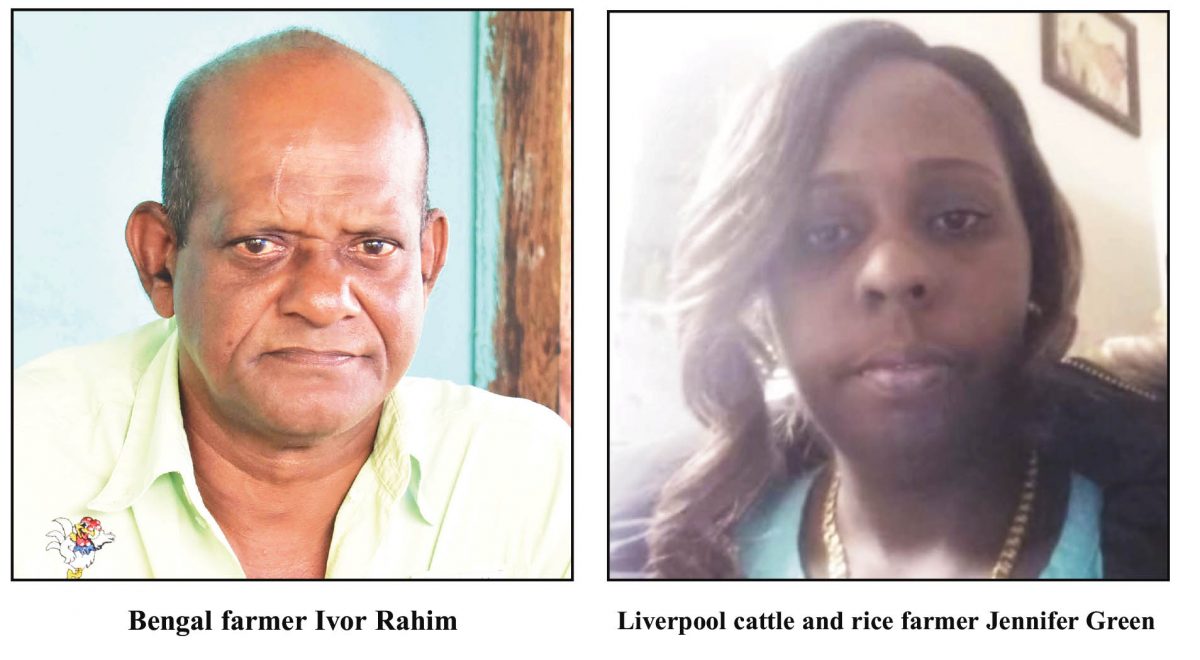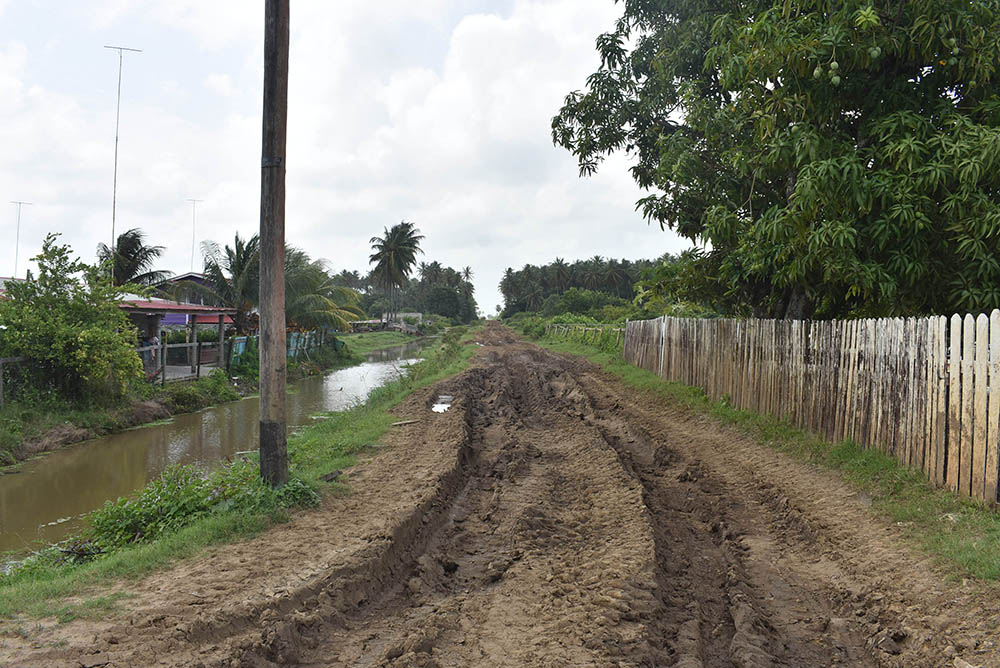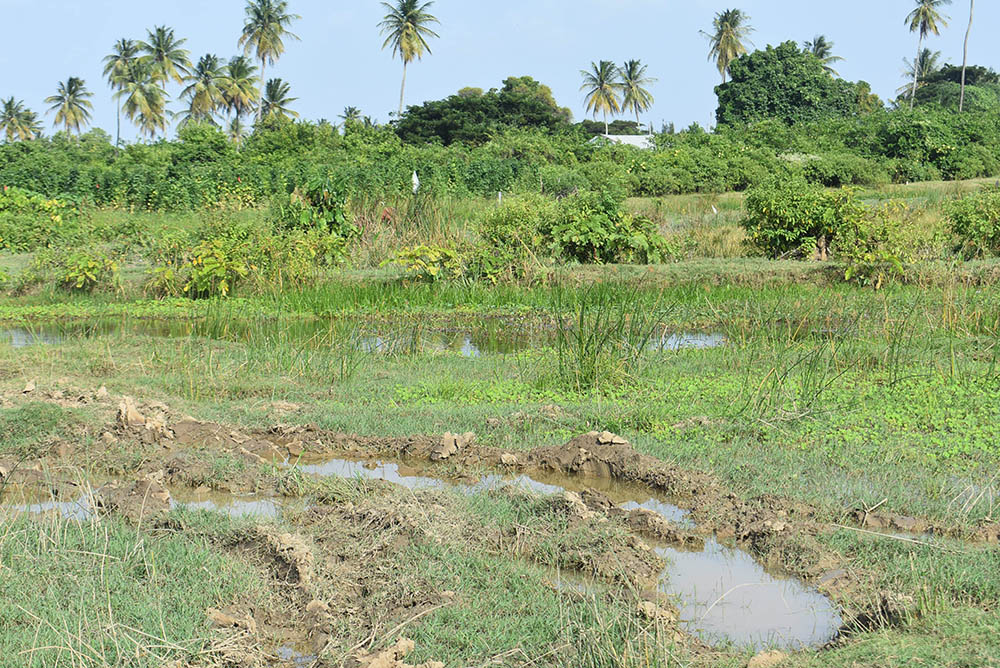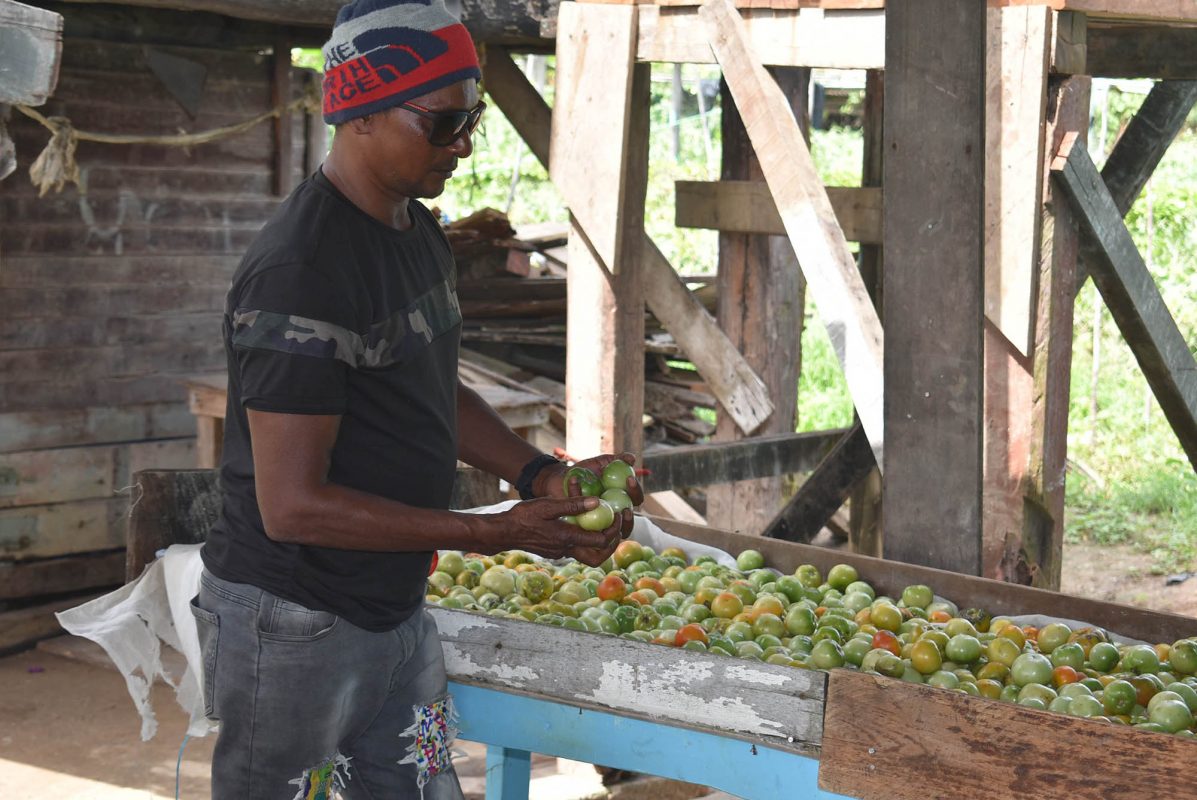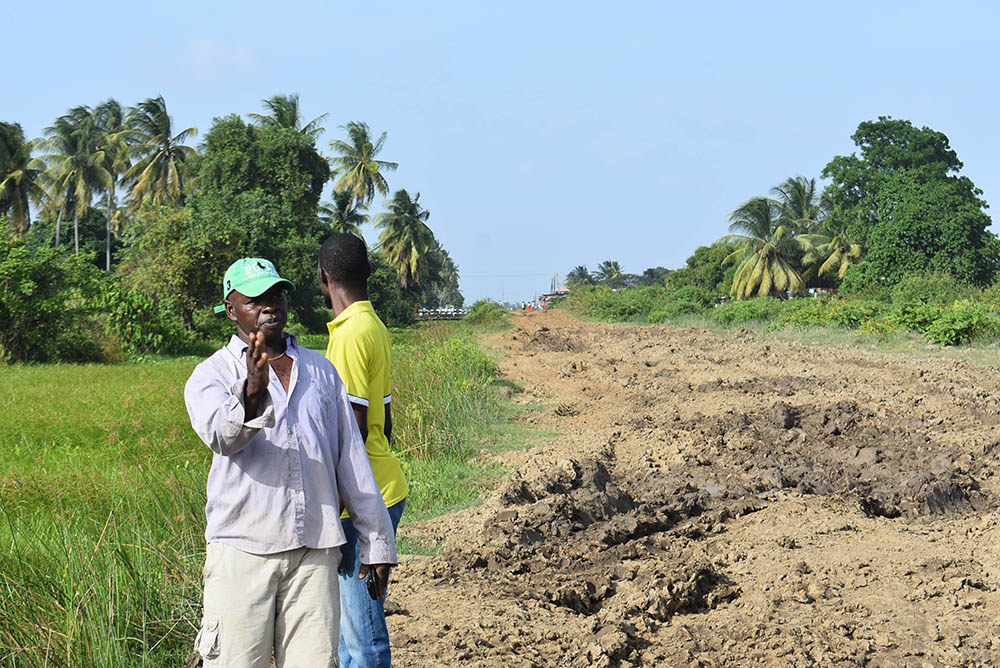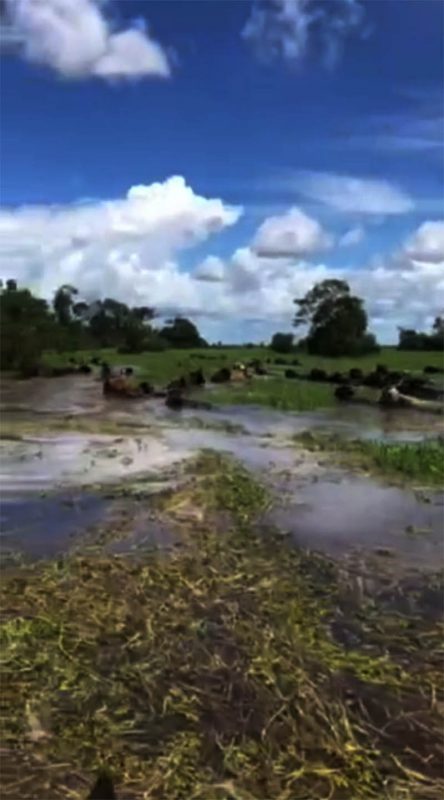A protracted ‘territorial’ controversy was still ensuing between rice and cattle farmers in the Kokerite Savannahs in the Black Bush Polder when the Stabroek Business made its second visit there last week, our first visit having been made back in 2015. The kernel of the controversy has to do with the respective ‘occupancy rights’ of rice and cattle farmers. Both groups are anxious to secure and maintain land on which to engage in their ‘competing’ agricultural pursuits.
What we had been told some time ago, was that there was an undocumented, but ‘clear’ understanding, that rice cultivation was ‘restricted’ to the ‘front lands’ of Lesbeholden, Johanna, Mibicuri and Yakusari whilst the two-mile long ‘backlands’ would be the domain of the cattle. This understanding has not, it seems, been ‘holding up’ too well. The ‘understanding,’ we are told, had become ‘fuzzy’ once the rice farmers had been given limited clearance to pursue cultivation. The idea was deemed to be an unwise one since, we are told, cattle are partial to rice stalks as part their diet. As is the case in so many other instances, however, decisions, once made, are often not easily reversible.
Once it had been determined that the cattle had indeed ‘taken to’ the taste of the rice stalks, conflict, inevitably, intensified. From a distance it appears that the problem will not be an easy one to solve. Our visit to the area this time around allowed us to renew acquaintances with Kamaldai Williams and her two sons, Elvis and Moses. We had met them back in 2015 during our first visit to the area. More than seven years on, Elvis and Moses still make the ten-mile trek to the savannahs to ‘check on’ the movement of the cattle. Kamaldai, it seems, has now eased herself into retirement leaving the challenges of managing the ‘territorial’ conflict that repose in what is an awkward logistical dilemma, to her sons.
Last week we met Elvis, who explained the daily routine of moving the cattle from their homestead and deeper in the savannahs, to allow for adequate grazing and watering. He makes no secret of the fact that the routine can be frustrating. Left to graze, the cattle strayed beyond their ‘territorial boundaries’ and had to be retrieved. The pursuit of finding ‘one or two’ strayed cows is both physically demanding and time-consuming. Sometimes the consequences of cattle having wandered off can be costly. Last week the brothers said that five head of cattle had disappeared recently and remain on the ‘missing’ list. Collectively, they are worth around $750,000.
Once the cattle are returned to the homestead they must be penned to keep them from straying into the rice fields to ‘enjoy’ what would appear to be part of their favoured diet. The problem, understandably, has given rise to tension among the rice and cattle farmers, neighbours, in many instances. When the Stabroek Business met Kamaldai this time around, we found that the family had now been operating with a reduced herd of around three hundred. Theft and flood-related mortality had taken their toll. During the 2022 rainy season the family had been compelled to move their sheep and goats, part of their livestock inventory, to Alness village. When, however, the cattle began to roam the residential community they had to be hastily returned to the savannahs.
Elvis told the Stabroek Business that the family had utilized the ‘flood relief’ subsidy that they had received to build a small pen for the animals. That, however, had amounted to only a partial solution to the problem. Elvis’ primary responsibility is a marketing one. Depending on the weather, the cattle would be moved ‘to market’ from the backlands via a dam. Standing on the roadway at Liverpool, we watched Monty Munroe ‘chaperoning’ a herd of around fifty cows through the streets. He engaged the Stabroek Business briefly, all the time monitoring the gingerly movement of the herd. Monty too had been forced to relocate his cattle from the Kokerite savannah to Liverpool village when the rains came. That is where they will have to remain until the weather changes. Cattle rustling, Monty says, is his primary concern at this time.
The sheer vastness of the savannah, he says, makes monitoring difficult. The rustlers have plenty of room to ‘work with,’ he says. Apprehending them in the act or retrieving stolen cattle is difficult. At Liverpool we also met with Jennifer Green. She ‘doubles up,’ pursuing both rice (around 300 acres) and animal farming. When we engaged her she wanted to talk about the impact of flooding in the Kokerite savannahs on rice cultivation as well as the challenges associated with the continually deteriorating streets in Liverpool.
When she engaged us it was evident that, physically, all was not well with her. She told us that even as she was concerned about her work-related challenges she was being challenged by pains associated with recovery from three recent surgeries. The last time that any serious work had been done on the streets of Liverpool, she recalled, was in 2009. Jennifer wanted to ‘say her piece’ on the cattle/rice ‘territorial controversy.’ The savannahs, she said, had been designated for cattle farming. Afterwards, she said, it appears that some rice farmers were granted permission to pursue cultivation there. That permission, she asserted, was granted, notwithstanding a widespread awareness of the challenges associated with proximity. The problem had been raised with several officials at the levels of both central government and regional administration, over the years, to no avail.
She too had had to move her cattle into her home village during the flooding, much to the chagrin of other residents. After a while she was faced with little choice but to return the herd to the still flooded savannahs. Jennifer ‘complains’ that she was not the recipient of a flood relief grant, which she is aware was made available to other residents, never mind the fact that she had suffered heavy losses during the flooding. Rice harvesting, Jennifer says, is about six weeks away. She is jittery. The access dam, which the combine must traverse, is in a deplorable state, “inaccessible,” she ventures. The dams at Manchester, Liverpool and Lancaster villages have benefitted from no maintenance work for several years. Harvesting, Jennifer anticipates, will be impacted by numerous problems.
Winston Munroe, another Liverpool rice farmer, concurs. This newspaper’s own sighting of the Liverpool/Lancaster dam suggests that the farmers have a point. Flooding and the attendant water level, has left the dam indistinguishable from the adjacent canal. At best, the farmers themselves have, over time, applied some makeshift maintenance, filling holes with mud or otherwise rendering badly damaged sections of the dam to allow for the traversing of tractors or combines. These, however, are strictly limited repairs that are unlikely to survive beyond the extant harvest.
More exhaustive remedial work including de-silting of canals clogged by vegetation needs to be undertaken. Clogged canals also create irrigation challenges, Munroe told the Stabroek Business. He has had no choice but to create a reservoir adjacent to his rice field. Munroe currently has forty acres of rice under cultivation. His accustomed ‘number’ is one hundred acres. The enduringly inhospitable condition of the dams over the past year has caused him to drop his ‘number.’ “Rice,” he says, “is like a child, it needs regular attention, and if it does not get the attention problems arise……problems like low yield and crop diseases.” That apart, he says that effective rice cultivation in the area is also undermined by a shortage of labour which means that, often, fertilizer cannot be applied in a timely manner.
That apart, incessant rainfall gives rise to the need to inspect the fields for plant diseases including fungi and paddy bug. Another Liverpool resident, Hubern Corlette has more than thirty years of rice cultivation ‘under his belt.’ His father, before him, planted rice too. Corlette believes that when consideration is given to the contributions that rice makes to both the ‘food security’ of the country, and to its export earnings, government should pay more attention to the contemporary challenges facing rice farmers. He disclosed that he had not planted rice for the previous season on account of what he said were problems beyond his control. For the current crop, however, he is ‘in the game’ again. When we spoke with him his seedlings, he said, were twelve days old.
Returning to rice cultivation (after the briefest of ‘sabbaticals’) has brought memories of the customary challenges flooding back. Labour costs, Hubern told the Stabroek Business, had increased, but paddy prices at the mill had not budged. Corlette noted too that the cost of applying a bag of manure to an acre of land has ‘jumped’ from $800 to $1300 while the cost of fertilizer too had taken off on an upward trajectory, jumping from $4000 to S11,000 and spraying had increased from $400.00 to $600.00. Yet another rice farmer, Randolph Captain, who resides at Brighton, Corentyne (but cultivates at Eversham) faces ‘tough times.’
He customarily cultivates around eighteen acres of rice land but was unable to harvest last year’s crop, resulting in losses which he estimates at around $3 million. The reason? The degraded condition of the Eversham access dam which created serious (access) challenges for combines and tractors. Nor did his woes stop there. Attempts to secure a flood relief subsistence grant, including visits to a number of sites where the grants were being disbursed, had failed. He had eventually been told, simply, that his name was “not on the list.” Grant told Stabroek Business that, these days, his “survival” in the rice industry depended largely on a credit arrangement for fuel and fertilizer extended by a local rice miller.
Daily expenses associated with meeting labour costs and the application of fertilizer to the land remain a demanding financial challenge. Several Berbice rice farmers have confirmed that the rice sector in the region is currently faced with an acute labour shortage, including a shortage of tractor operators. These days, labour costs can be as high as around $7,000 per day. The drift away from working as labourers in the rice sector has come, mostly, following health-related complaints associated with close contact with chemicals. Munroe says that the time has come for Guyana to begin to seriously contemplate a more technology-intensive rice industry.
On the Corentyne last Saturday other livestock and cash crop farmers were bemoaning the fact that they had not been beneficiaries of ‘flood relief’ grants. They claim knowledge of such grants having been received by persons who are not part of the agriculture sector. Additionally, this newspaper was told that rice farmers who had rented their farmlands to other individuals had also been recipients of flood relief grants. The Stabroek Business was unable to confirm these claims. It is a matter, they say, which the authorities have a moral obligation to address.
